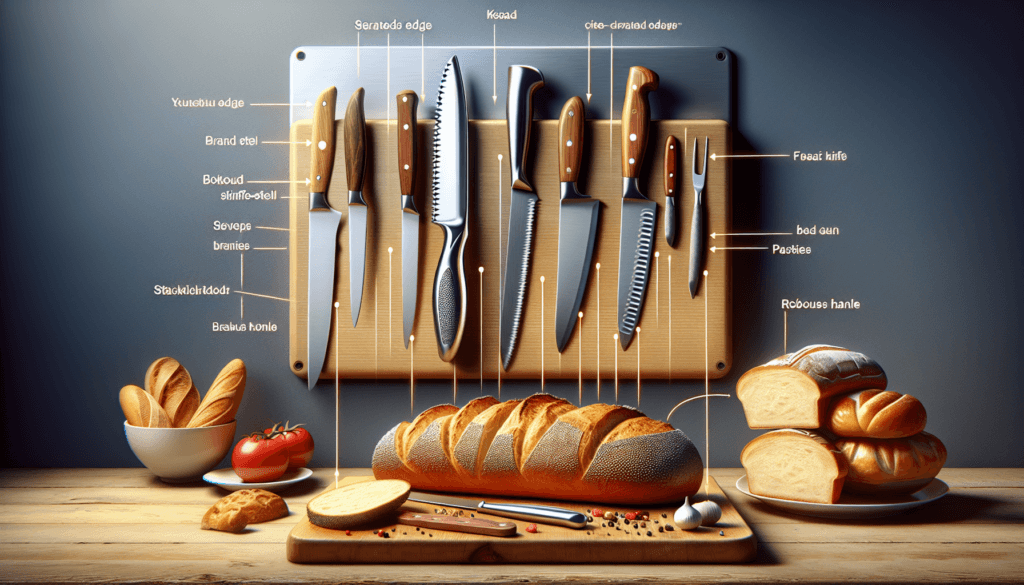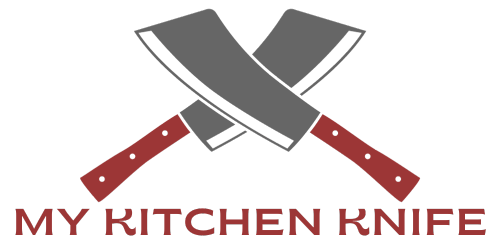Picture this: the aroma of freshly baked bread fills your kitchen, and you can’t wait to slice into that perfect loaf. But as you reach for your dull, mismatched knife, you can’t help but wonder if there’s a better tool for the job. Fear not! In this article, we’ll guide you through the art of choosing the perfect kitchen knife for effortlessly cutting through bread and pastries. Say goodbye to squashed, crumbly slices and hello to perfectly sliced treats that will make you the envy of every brunch gathering.
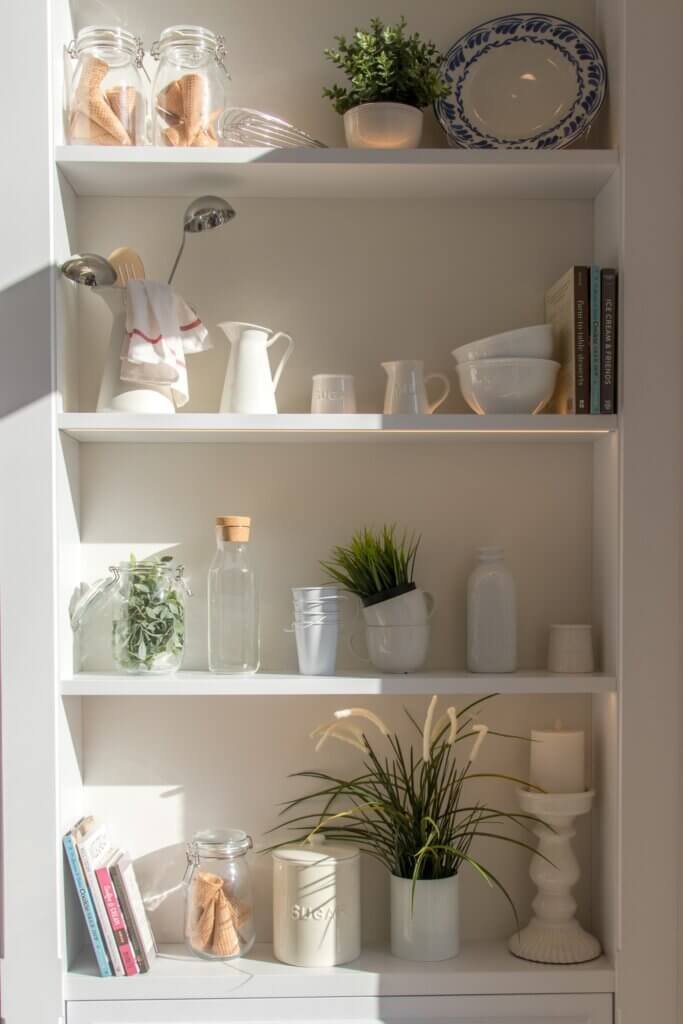
Blade Material
When choosing a kitchen knife for slicing bread and pastries, the blade material is an important factor to consider. Different blade materials have varying qualities that can affect the performance and longevity of the knife. Here are three commonly used blade materials to consider:
Stainless Steel
Stainless steel is a popular choice for kitchen knives due to its resistance to rust and corrosion. It is a durable and low-maintenance option for slicing bread and pastries. Stainless steel blades are generally easy to sharpen and maintain, making them a convenient choice for everyday use in the kitchen.
Carbon Steel
Carbon steel blades are known for their exceptional sharpness and edge retention. These blades require regular maintenance to prevent rust or discoloration, as carbon steel is more prone to oxidation. However, with proper care, a carbon steel blade can provide unparalleled precision and slicing ability, making it a great choice for dedicated bakers and pastry enthusiasts.
Ceramic
Ceramic blades are incredibly sharp and retain their edge for a long time. They are also resistant to stains and corrosion. Additionally, ceramic blades do not impart any metallic flavors to the food, making them an excellent choice for slicing bread and pastries without affecting the taste. However, ceramic blades are more brittle than stainless steel or carbon steel, so they may be prone to chipping or breaking if not handled with care.
Blade Length
The blade length of a kitchen knife is another crucial consideration when selecting a knife for slicing bread and pastries. Different blade lengths offer varying advantages and versatility. Here are three common blade length options:
8-10 inches
An 8-10 inch blade length is ideal for most bread and pastry slicing tasks. This length provides enough versatility to handle various bread sizes and pastries while offering control and precision. Knives with shorter blades are generally more maneuverable, making them suitable for intricate pastries and delicate bread slicing.
10-12 inches
If you frequently deal with larger loaves of bread or pastries, a 10-12 inch blade length might be more suitable for you. These longer blades provide the necessary length to slice through larger breads while maintaining control and accuracy. However, they may be less maneuverable compared to shorter blades.
12+ inches
For professional bakers or those who require a knife for commercial purposes, a blade length of 12 inches or longer offers the ultimate versatility and power. These longer blades are suited for slicing through thick and crusty breads or large pastries with ease. However, they may require more skill and practice to handle effectively.
Blade Type
The blade type plays a significant role in determining the cutting performance and suitability for specific tasks. When it comes to slicing bread and pastries, there are two primary blade types to consider:
Serrated
A serrated blade features small, jagged teeth along the cutting edge. This serration helps grip the bread’s crust without crushing the delicate interior. Serrated blades excel at cutting through crusty breads and pastries with minimal effort, ensuring clean slices without squishing the texture. However, they may not be as effective for precise, straight cuts.
Straight
Straight blades are the traditional choice for slicing bread and pastries. These blades have a smooth, straight cutting edge, allowing for clean and precise cuts. Straight blades are versatile and suitable for various slicing techniques, including crusty breads, pastries, and softer doughs. With the right technique, they can achieve paper-thin slices for delicate pastries.
Handle Design
While the blade is crucial, the handle design of a knife greatly impacts your comfort and control while slicing bread and pastries. Here are two common handle designs to consider:
Full Tang
A full tang handle means that the knife’s blade extends through the entire length of the handle, creating a solid and sturdy construction. Full tang handles offer excellent balance and durability, ensuring a comfortable grip during prolonged use. This design is highly preferred by professional chefs and bakers due to its reliability and stability.
Partial Tang
A partial tang handle, also known as a rat-tail tang, only extends partway into the handle. While it may not offer the same level of stability as a full tang handle, a well-designed partial tang handle can still provide comfort and control during bread and pastry slicing. The key is to look for high-quality materials and construction to ensure durability and stability.
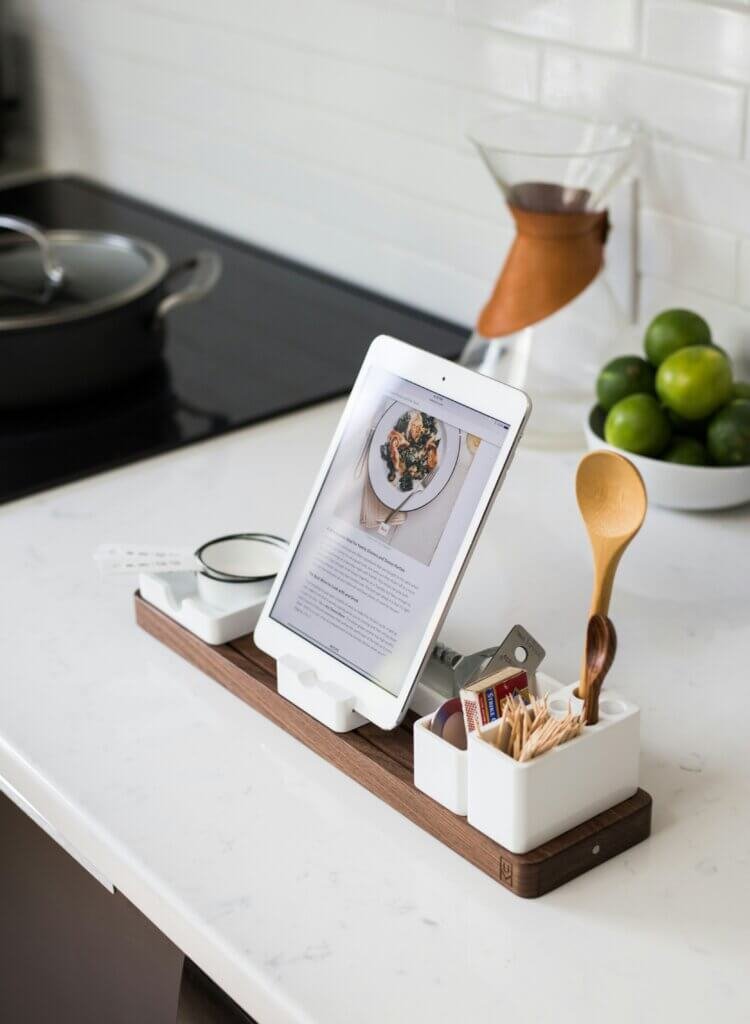
Handle Material
The handle material is an important factor to consider when choosing a kitchen knife for bread and pastry slicing. Different materials offer varying levels of durability, grip, and aesthetics. Here are five common handle materials to consider:
Wood
Wooden handles offer a classic and traditional aesthetic. They provide excellent grip and are comfortable to hold. However, wood requires regular maintenance to prevent moisture damage and warping. It is essential to dry the handle thoroughly after cleaning to maintain its integrity and prevent cracking.
Plastic
Plastic handles are lightweight and often budget-friendly. They are easy to clean and maintain, making them a practical choice for everyday use. However, their durability may not match that of other materials, and they may lack the premium feel of higher-end options.
Composite
Composite handles are made from a combination of different materials, such as wood, plastic, and metal. These handles offer a balance of durability, aesthetics, and grip. They often provide a comfortable and ergonomic grip that reduces hand fatigue during extended slicing sessions.
Stainless Steel
Stainless steel handles are known for their durability and resilience. They are resistant to rust and corrosion, making them suitable for use in a humid kitchen environment. Stainless steel handles often have a sleek and modern appearance, adding a touch of elegance to your knife collection.
Rubber
Rubber handles offer a secure and comfortable grip even when wet, making them an excellent choice for those who prefer a non-slip handle. They are often ergonomically designed to fit the contours of the hand, reducing hand strain and enhancing control while slicing. Rubber handles are also easy to clean and maintain.
Weight and Balance
The weight and balance of a knife greatly affect its handling and usability. When slicing bread and pastries, finding the right weight and balance is important for control and precision. Here are four weight and balance options to consider:
Lightweight
Lightweight knives are easy to maneuver and require less effort to slice through bread and pastries. They are suitable for delicate tasks and individuals who prefer a lighter knife for prolonged use. However, lighter knives may require more pressure to cut through dense or crusty breads.
Middleweight
Middleweight knives offer a balance between maneuverability and cutting power. They provide enough heft to handle a wide range of slicing tasks while still being comfortable to hold. Middleweight knives are a popular choice for home cooks and bakers due to their versatility and ease of use.
Heavyweight
Heavyweight knives provide the extra weight and power needed for tackling thick and crusty breads. They effortlessly cut through dense doughs and tougher bread crusts, allowing for clean and precise slices. However, heavyweight knives may be more physically demanding to use for extended periods.
Balanced
A well-balanced knife offers an equilibrium between the blade and handle, resulting in optimal control and comfort. When a knife is balanced, it feels natural in hand, reducing strain and enhancing slicing performance. Look for knives that have evenly distributed weight throughout the blade and handle for a balanced experience.

Knife Maintenance
Proper knife maintenance is essential for maintaining the performance and longevity of your kitchen knife. When choosing a knife for bread and pastry slicing, consider the ease of cleaning and the sharpening and maintenance requirements. Here are two aspects to consider:
Ease of Cleaning
Knives with smooth and seamless designs are easier to clean as they minimize the risk of food particles getting trapped in crevices. Additionally, knives that are dishwasher safe can simplify the cleaning process. However, it is generally recommended to hand wash knives to prevent damage and maintain the sharpness of the blade.
Sharpening and Maintenance
Different blade materials require different methods of sharpening and maintenance. Stainless steel blades are generally easy to sharpen and maintain, and there are various sharpening tools available on the market. Carbon steel blades require more frequent maintenance, as they are prone to oxidation and may require periodic oiling to prevent rust. Ceramic blades, on the other hand, require specialized sharpening tools and techniques, as they are extremely hard and brittle.
Budget
When it comes to selecting a kitchen knife, your budget will play a significant role in determining the options available to you. Here are three budget categories to consider:
Inexpensive
Inexpensive knives are often made with less expensive materials and may not offer the same level of performance or durability as higher-priced options. However, there are still quality knives available at lower price points that can provide satisfactory performance for bread and pastry slicing.
Mid-range
Mid-range knives offer a good balance of quality and affordability. These knives are often made with better materials and construction, providing better performance and longevity compared to inexpensive options. Mid-range knives can be a great choice for home cooks and bakers looking for reliable knives within a reasonable budget.
High-end
High-end knives are often made with premium materials and exceptional craftsmanship. These knives tend to be more expensive but offer top-notch performance, durability, and aesthetics. Professional chefs and avid bakers may opt for high-end knives for their superior cutting ability and long-lasting quality.
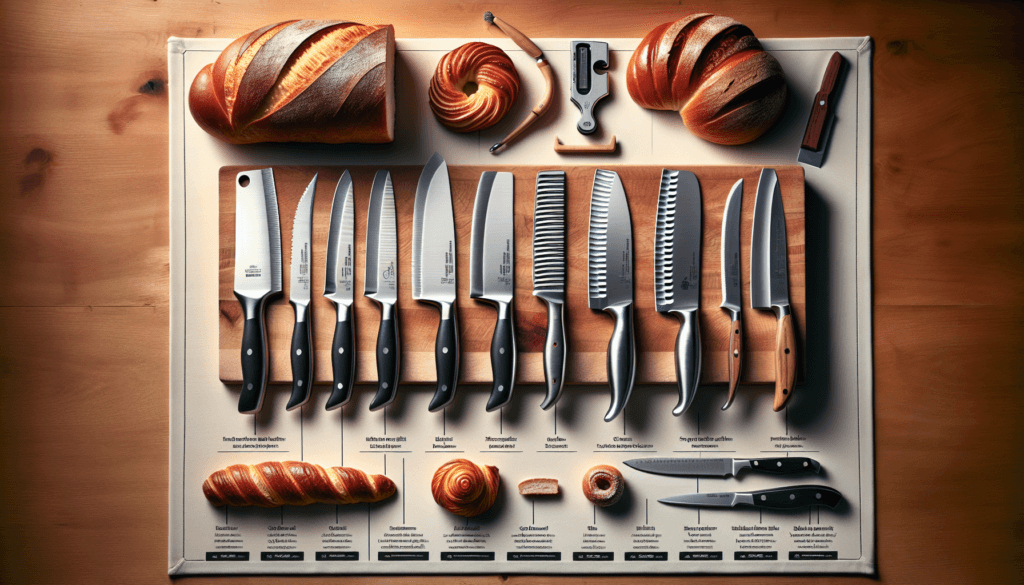
User Preference
Everyone has their own preferences when it comes to kitchen tools, and selecting a knife for slicing bread and pastries is no exception. Here are three aspects of user preference to consider:
Comfort
Comfort is crucial when using a knife for prolonged periods. Pay attention to the handle shape, grip, and weight distribution to ensure a comfortable and ergonomic experience. Trying out different knives in person can help determine which one feels the most comfortable in your hand.
Grip
The grip of a knife affects your control and maneuverability. Some handles are designed to be non-slip, offering a secure grip even when wet. Others may have textured surfaces or ergonomic shapes that enhance grip and reduce hand fatigue. Consider your personal grip preferences and choose a knife that matches your grip style.
Style
The aesthetic appeal of a knife may be important to you as well. Knives come in various designs, from traditional to modern, and can add a touch of personal style to your kitchen. While style should not be the primary factor, it can be a tiebreaker when choosing between two equally suitable options.
Brand and Reputation
Considering the brand and reputation of the knife manufacturer can provide valuable insights into the quality and reliability of the knife. Look for trusted brands that have a long history of producing high-quality kitchen knives. Research customer reviews and ratings to gain further understanding of the overall satisfaction of users.
In conclusion, when choosing a kitchen knife for slicing bread and pastries, it is essential to consider the blade material, length, type, handle design and material, weight and balance, maintenance requirements, budget, user preference, and brand reputation. By carefully evaluating each aspect and prioritizing your specific needs and preferences, you can find the perfect knife that will enhance your bread and pastry slicing experience in the kitchen. Happy slicing!
